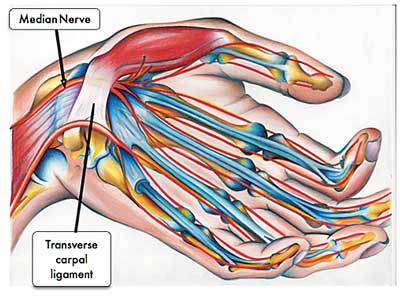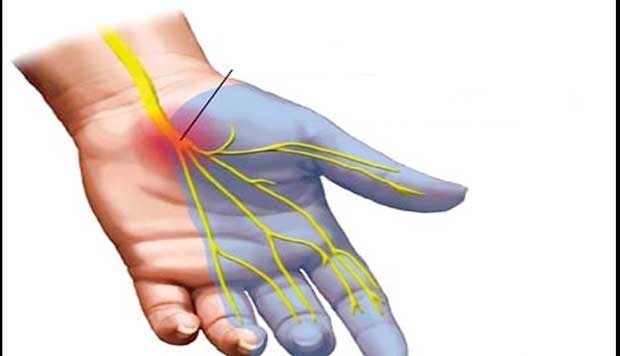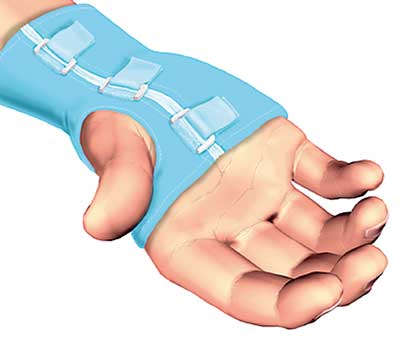12 Jul 2017 - {{hitsCtrl.values.hits}}

 ‘Numbness in hands’ is a common complaint encountered by the primary care physicians worldwide. The most frequent cause for numbness and tingling of the hand is the Carpal Tunnel Syndrome (CTS). But how relevant is this topic to you?
‘Numbness in hands’ is a common complaint encountered by the primary care physicians worldwide. The most frequent cause for numbness and tingling of the hand is the Carpal Tunnel Syndrome (CTS). But how relevant is this topic to you?
Does your occupation involve frequent forceful repetitive hand motions or vibrating hand held tools? Are you a gardening enthusiast, preferring to labour over the plants whenever you can? Do you have numbness in one or both of your hands? Or are you simply interested in knowing about another interesting medical condition? Read on to find out more.

Forearm and hand muscles
Carpal tunnel is a cave-like structure in our wrist leading from the forearm to the hand. The floor of the tunnel is the wrist (carpal) bones and the roof comprises fibrous tissue called the transverse carpal ligament. This structure contains nine tendons of the hand muscles and the median nerve, an important nerve which contributes to both feelings and movements of the hand.
With all these structures contained inside an enclosed structure, the space inside the tunnel is pretty cramped. Therefore in instances where the inside pressure is increased, eg: due to fluid collection, the median nerve gets compressed, causing the symptoms to appear overtime.
Symptoms
CTS isn’t an acute disease. The symptoms will appear gradually, increasing in intensity overtime.
Intermittent tingling or burning sensations, numbness in index and middle fingers, sometimes a part of the ring finger and the thumb of your hands, are the most frequent symptoms. Waking up at night due to pain in the hand which is relieved by hanging the arm out of the bed is a common complaint of patients having CTS. Clumsiness when picking up small objects, pain and weakness of the hands are also seen in some cases.

People at risk
Females and the middle aged population have a higher chance of getting CTS. In addition, conditions like hypothyroidism, diabetes, obesity and having close family members with the same condition may increase the risk of CTS. Interestingly, this is a common complaint in pregnancy because the fluid gets accumulated in the tunnel, leading to compression of the nerve.
Research has revealed that the risk of CTS is increased in workers belonging to certain professions. If your job involves forceful motions of the hand with the wrist held in an awkward position for a long time, eg: writers, machine operators, you may also have an increased chance of having CTS. Gamers and typists are also believed to have a higher risk , though it is yet to be proven clinically. Another factor worthy of note is that in Sri Lanka, housewives who are doing frequent chores like squeezing the coconuts scraps to get the milk and manually washing clothes with forceful hand motions are also said to have a higher prevalence of CTS.
Diagnosis
Diagnosis is mainly clinical, meaning that the doctor will diagnose the condition after getting a proper medical history and doing a proper clinical examination. Clinical examinations will include tests specifically designed to diagnose CTS.
Treatment
If the disease is mild, your doctor may prescribe you a special splint to be worn at night, immobilizing the wrist. This will in turn reduce the pressure on the nerve, relieving the symptoms. Also, an injection of steroids may be recommended.

But if these measures don’t help, or if the symptoms hinder your day to day activities, you may have to opt for Surgery. Don’t be anxious though, Carpal Tunnel Release surgery isn’t a major surgery and is usually done as an outpatient procedure.
In this procedure, the surgeon will relieve the pressure on the nerve by dividing the transverse carpal ligament interconnecting the wrist bones on either side, through a small incision made in the wrist under anesthesia.
Lifestyle changes
If you are having CTS symptoms or belong to a group at risk of having CTS, small lifestyle alterations will do wonders towards relieving symptoms or from preventing them from appearing in the first place.
Since the symptoms usually appear during sleep, try to avoid sleeping with your wrist bent.
23 Dec 2024 8 hours ago
23 Dec 2024 23 Dec 2024
23 Dec 2024 23 Dec 2024
23 Dec 2024 23 Dec 2024